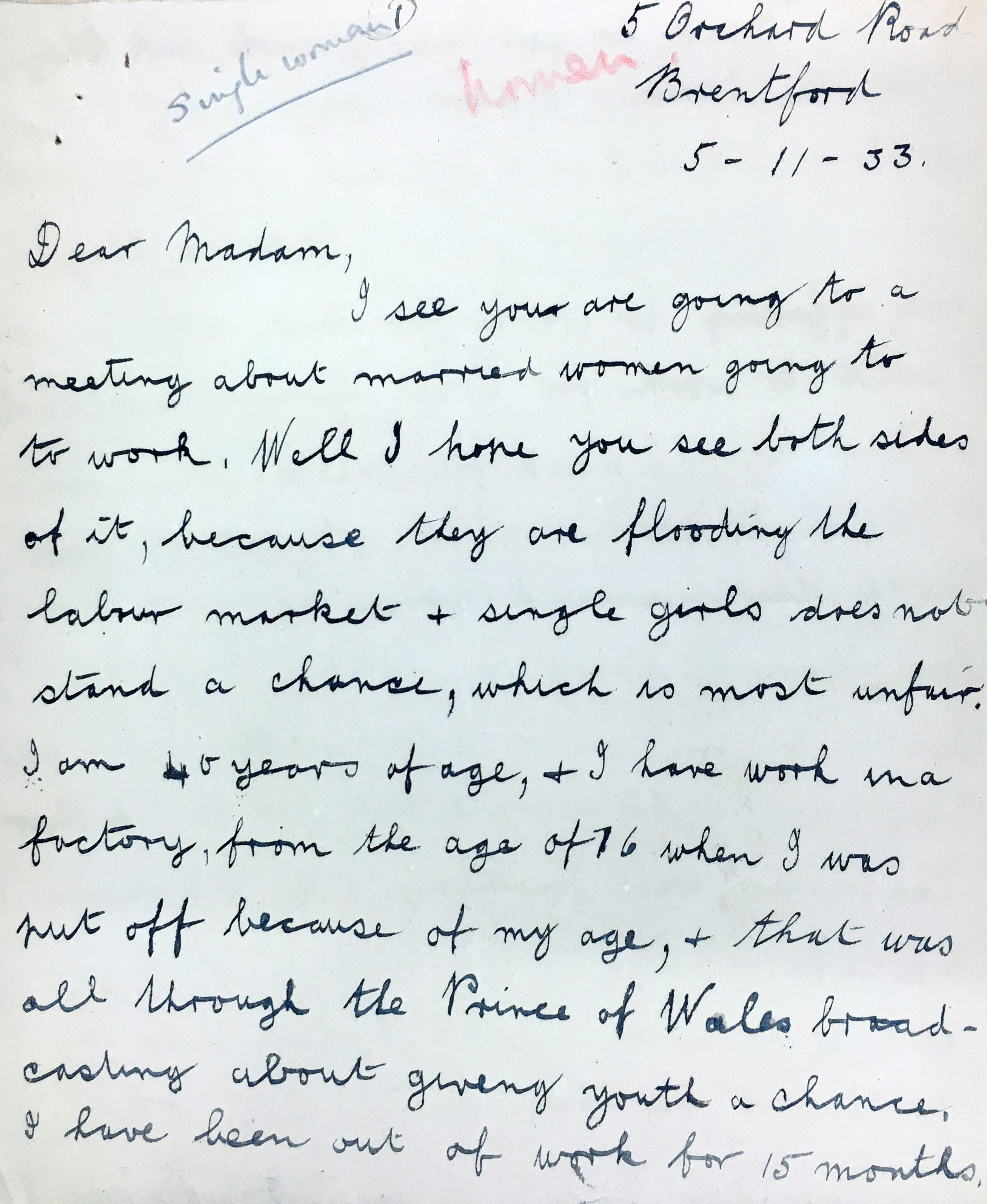Above: Letter to Lady Astor on the issue of married women’s employment, 1933. Special Collections of the Museum of English Rural Life. All rights reserved.
Yesterday our research led us to the Museum of English Rural Life (part of the University of Reading), where we studied some of Nancy Astor’s papers. Lady Astor was the first woman to sit in the House of Commons after succeeding her husband in 1919. She remained MP until her retirement in 1945. Her papers include correspondence as well as a number of ephemera and newspaper cuttings. On this particular day, our research focused on women’s work and women in industry, with Astor’s papers providing very enlightening information on issues such as the Marriage bar (i.e. the dismissing of women from employment on marriage) and the working conditions of women in industry in the early 1930s. The numerous letters sent to Lady Astor by working women exposing their own situations and conflicting points of views, in particular, provided a helpful insight in the lived experiences of women of the period. Such finds will feed into the wider context of our research, helping us build a broader understanding of the social issues facing women working in type drawing offices.
Our investigations have also led us to the Women’s Library, hosted by the London School of Economics. The library provided some helpful information on women’s wages in the printing trade and their involvement with unions. Over the past nine months our research has taken us to a number of type-related archives, including:
- the Linotype & Machinery archives at the Museum of Science & Industry in Manchester;
- the Monotype Archives (privately owned by Monotype) in Salfords, Surrey.
- the Type Archive in London;
- the Non-Latin Typeface Collection, held at the Department of Typography & Graphic Communication, University of Reading;
The most extensive and continuous records relating to staff employment and working practices in a British type drawing office relate to the Monotype Corporation. We intend to use the somewhat scarcer archives connected to the Linotype companies mainly as a comparator. This archival research is of course complemented with background and contextual reading, as well as a number of interviews of still-living personnel.
N.B. Our colleague Elena Veguillas has recently published this very helpful article about working with archival material on her own blog.

